The Whyte E-160 now comes in all of the wheel size flavours. It’s a height-dependent wheel size smorgasbord though. Any size bigger than a S is available in either full 29in wheels or mulled mixed wheel set up. XS and S size bikes are still sporting the 27.5in wheels of the previous E-160.
- Brand: Whyte
- Product: E-160 RSX
- Price: £7,999
- From: Whyte Bikes
- Review by: Benji for a few hours
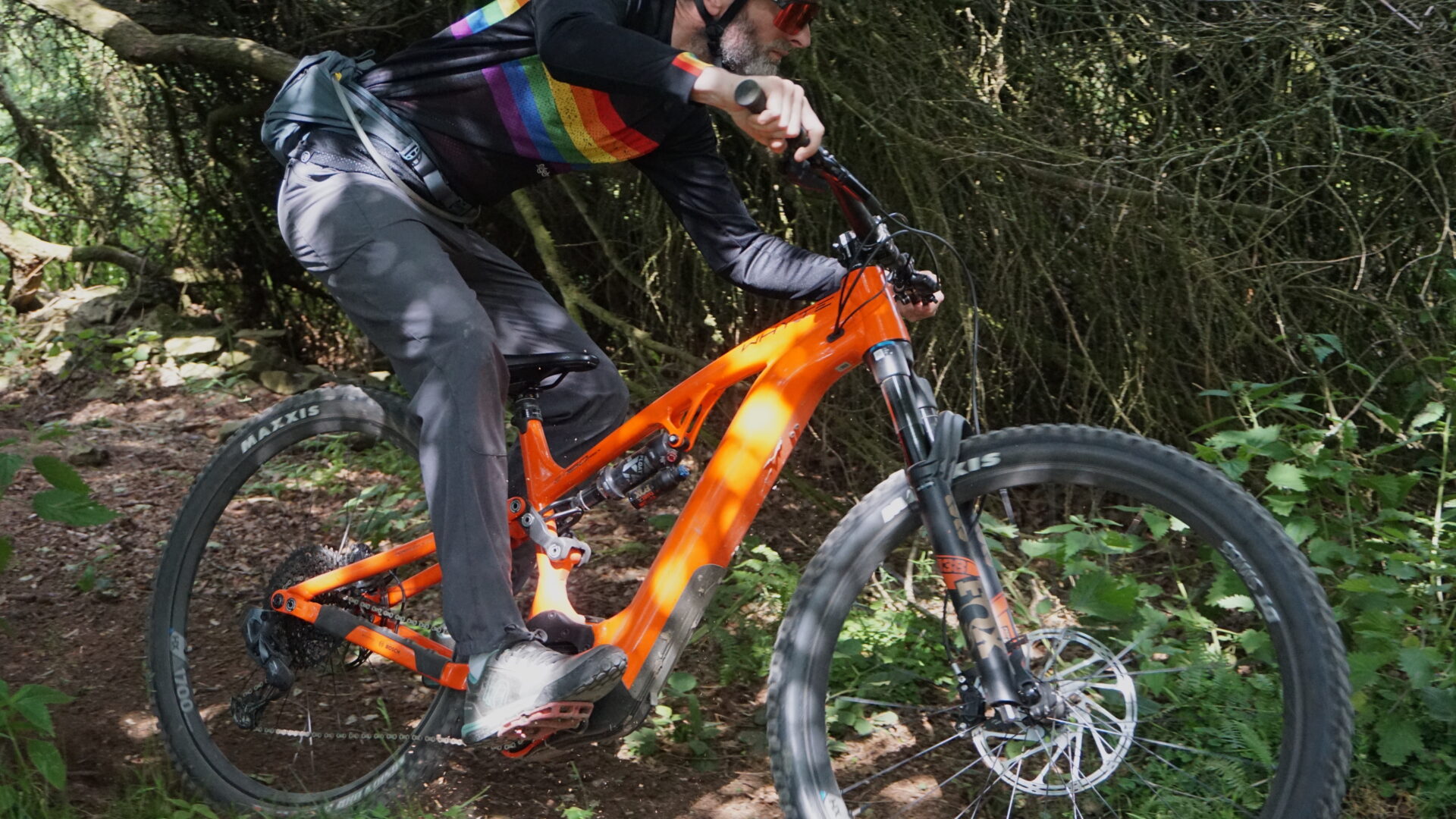
Three things I loved
- Big battery = big mileage
- Traction for days
- Generous reach
Three things I’d change
- Big battery = big weight
- E-bikes are expensive
- Steeper seat angle please

Despite what you may think from the name, the Whyte E-160 gives out 150mm of rear travel. The fork is 160mm though.
The rear suspension is yer classic 4-bar layout with pivot on the chainstay and everything. It’s a system that works well on e-bikes where a degree of pedal inefficiency is something of a moot point and the benefits of traction come to the fore.
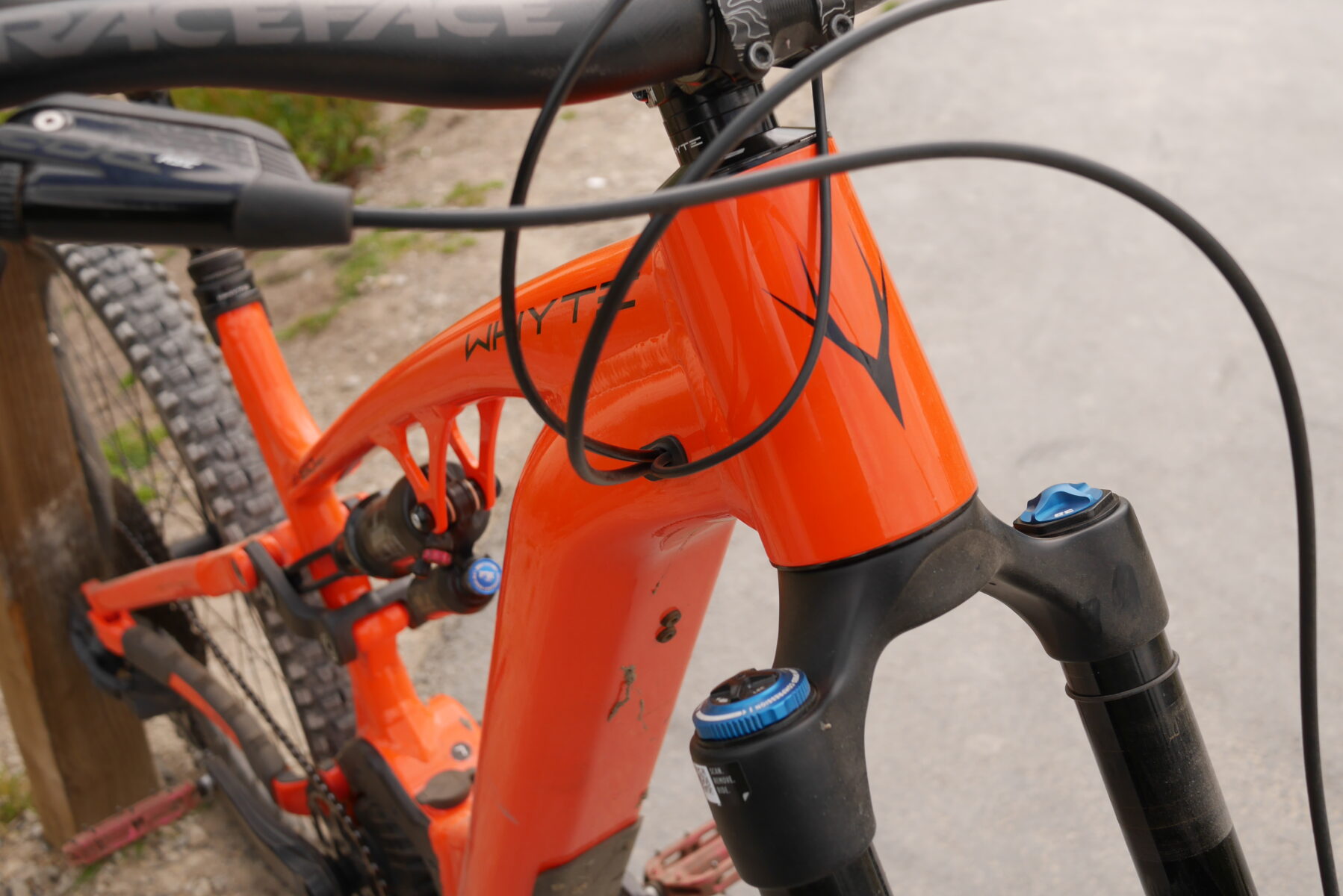
Whyte make a bit of play of the shock tune on the E-160. Essentially they wanted the least amount of damping as is feasible (to maintain small bump compliance) whilst also keeping an eye on the mid-stroke support not being not lacking/absent.
It’s mid-stroke that gives any bike – electric or otherwise – that elusive ‘pop’ to its handling. And with e-bikes being significantly heavier than normal bikes, mid-stroke response is doubly important.
Nerdly speaking, the anti-squat figures are low (again, fine for a pedal-assist bike) and the leverage curve is moderately progressive (early to mid 20 percents range). In essence, the back end should be fluttery at sag, poppy in the main part and have an end-stroke that can deal with massive jarring hits/landings.
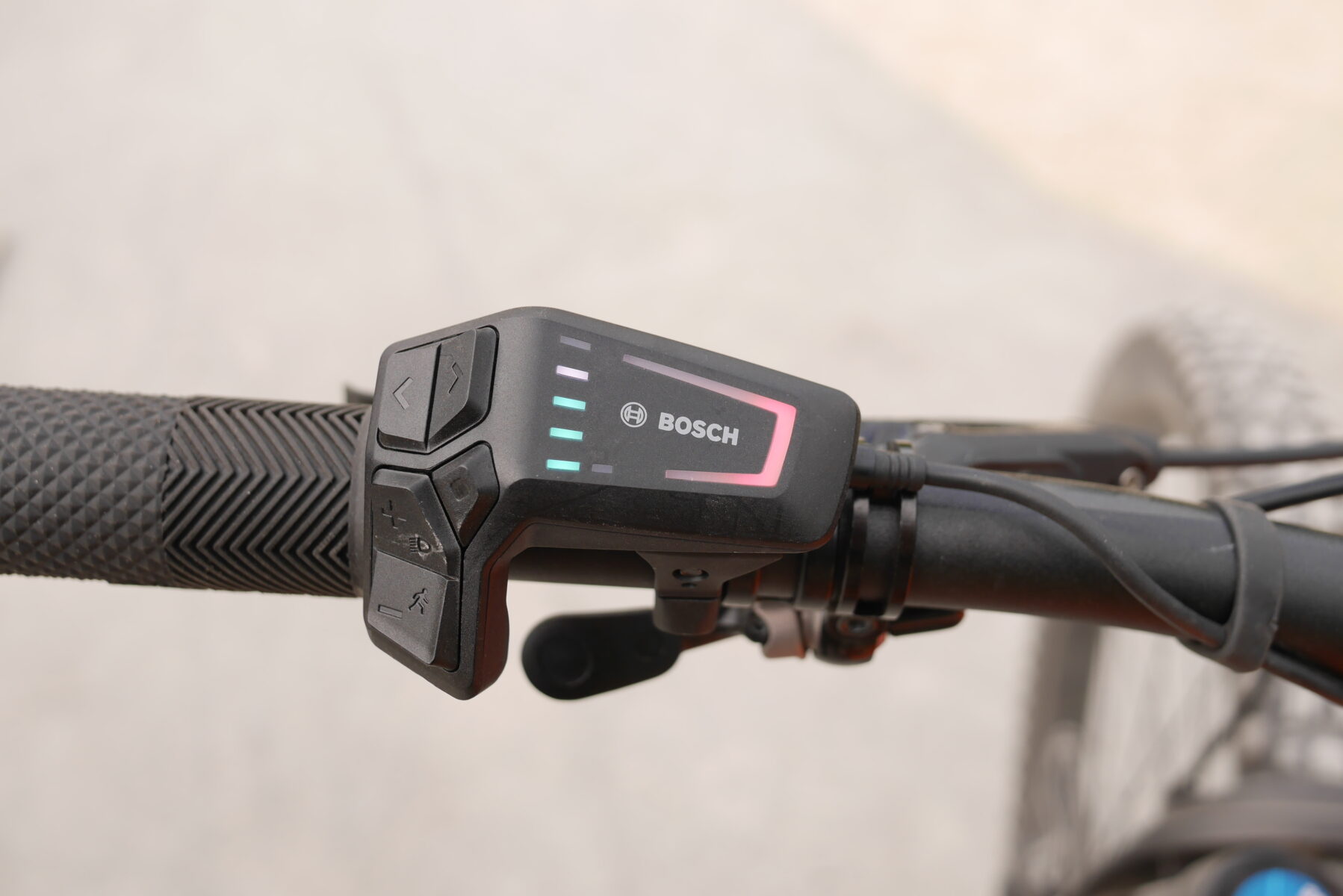
Whyte are sticking with Bosch for the e-stuff. The latest Bosch CX Smart System gets paired to a big ol’ 750Wh battery. What the E-160 doesn’t get is the big flat screen TV mounted over the stem (AKA the Purion display). The E-160 bikes just get the relatively modest Smart System controller mounted adjacent to the left hand grip.
The down tube on the Whyte E-160 doesn’t have a bomb-bay door removable panel. The down tube is just that, a tube. The battery is removable if you need it to be but it slides out of a hole near the BB.

Ditching the removable panel method does a couple of things. It saves a bit of weight and adds some structural rigidity to the frame. It also removes the issue of removable panel catch mechanism failing and the battery falling out.
Despite the current vogue for e-bikes being ‘bigger batteries better’, I think it’s worth noting that you can run a smaller battery in the down tube if you wanted to. The battery attachment is located at the BB end of the down tube and it’s no issue just having the rest of the down tube battery compartment space being just that, space.

Why would you want to run a smaller battery? We’ll come to that later.
The Bosch drive unit (known by most folk as ‘the motor’) has been rotated a few degrees up at its front to afford the battery to sit lower in the bike. And also to enable the battery to be able to be slid out.
Some quick titbits about the frame: it’s 1.8in head tube/fork future-proofed, the mech hanger is a SRAM UDH, cabling is internally routed, it’s routed for Fox LiveValve/Shimano Di2 lecky stuff, it has bottle bosses, there’s decent frame protection and there’s a flipchip.
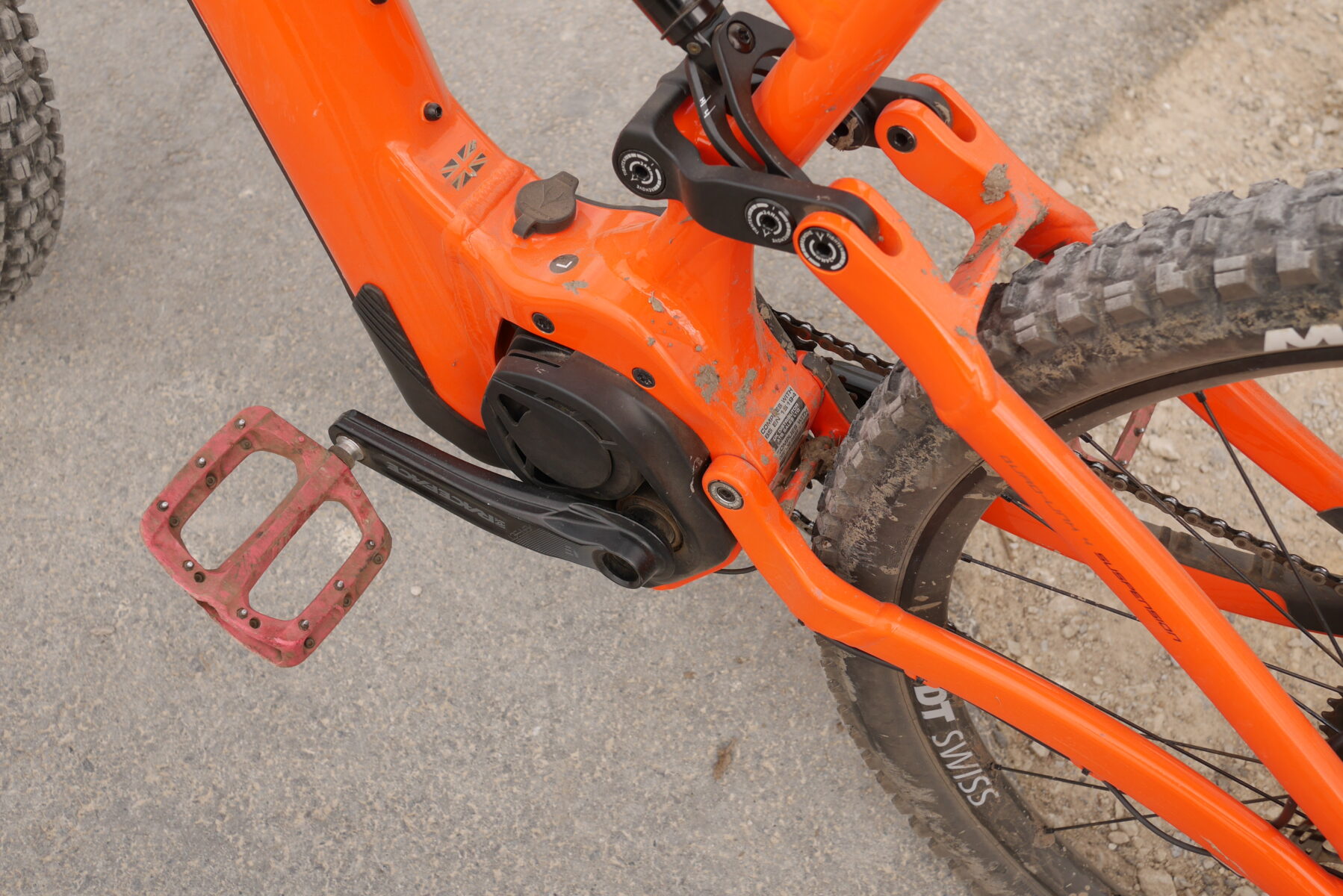
The flipchip, for once, is noteworthy. It changes the angles by approx 0.6° and raises/lowers the BB by 8mm. And, for once, I think the bike is better in the High setting. I know. Shock horror. Basically the BB is really low slung and the 75ish° seat angle on the slack side.
The Low setting makes the bike impractically low and too slack (seat angle anyway). The head angle is just about slack enough to cope, because it is in partnership with a relatively rangey reach (483mm on L) and the super stable nature of a low-slung ‘n’ chunky e-bike.
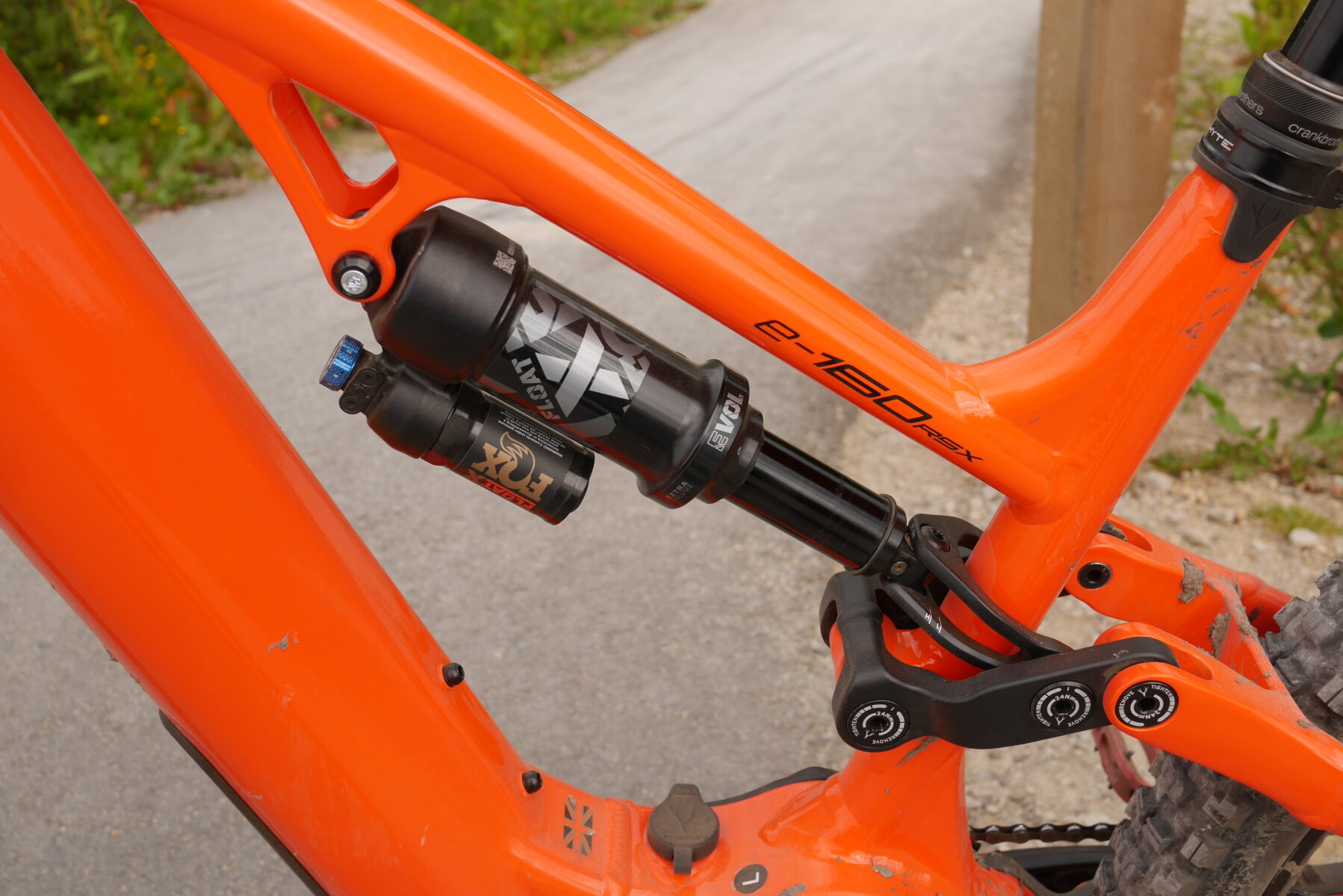
The geometry stats you can read below. Aside from the lowness and decent reach, the other thing to note is the chainstay length. 446mm across the board. This is short for an e-bike. Especially a L/XL size e-bike.
Similarly, the spec sheet you can read for yourself below. Note: our test bike differed slightly from production spec but not in any significant, ride-affecting way.
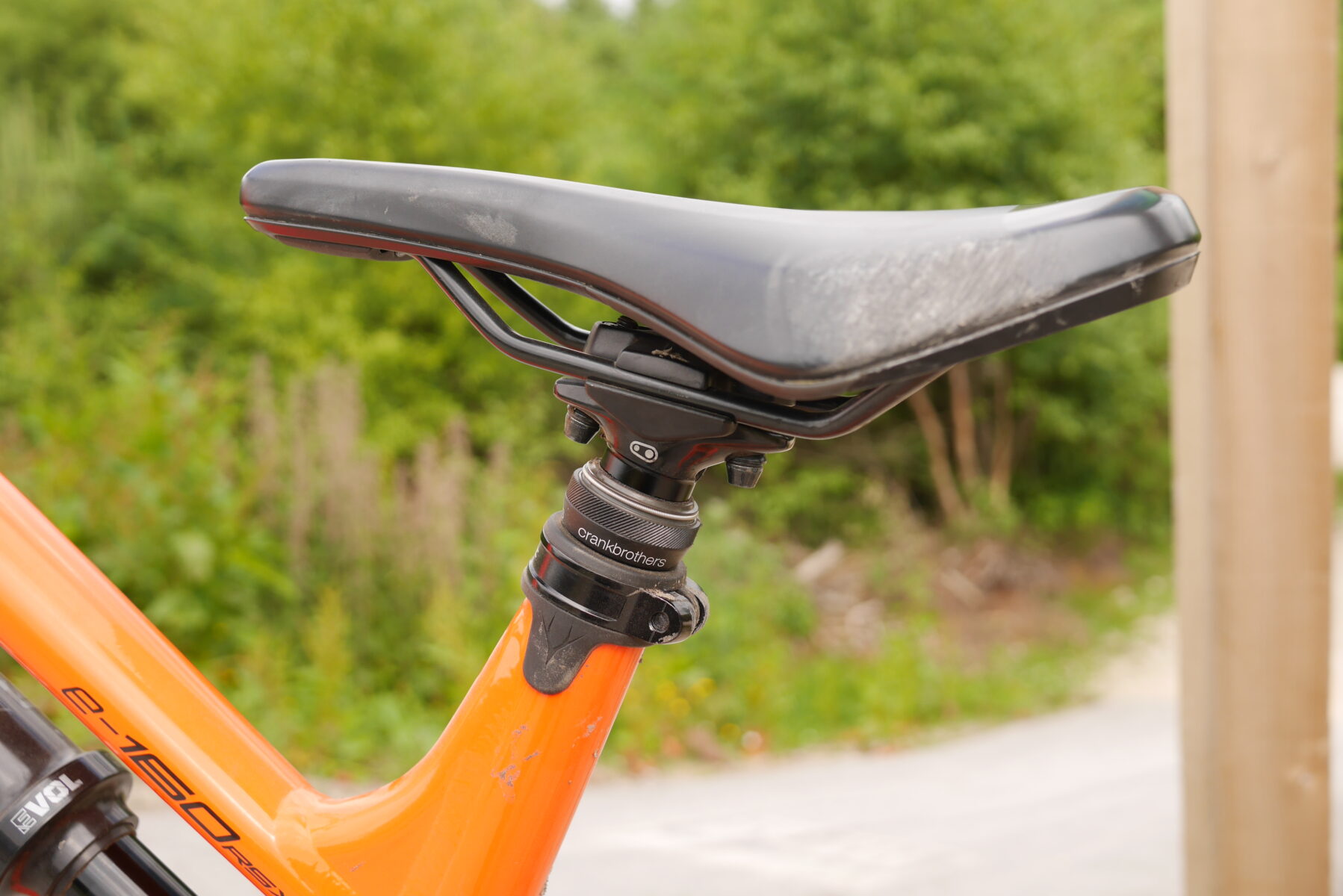
The highlights on this RSX model for me were the Fox 38 fork, the big rotor SRAM Code RSC brakes and the Maxxis Assegai/DHR II tyre combo in their proper versions (MaxxGrip front, DoubleDown rear etc).
There are two E-160 models. This £7,999 RSX top one and a £6,399 E-160 S with RockShox Zeb RC fork and Deluxe Select R shock, SRAM GX Eagle drivetrain, SRAM Guide RE brakes etc).
First ride impressions of Whyte E-160
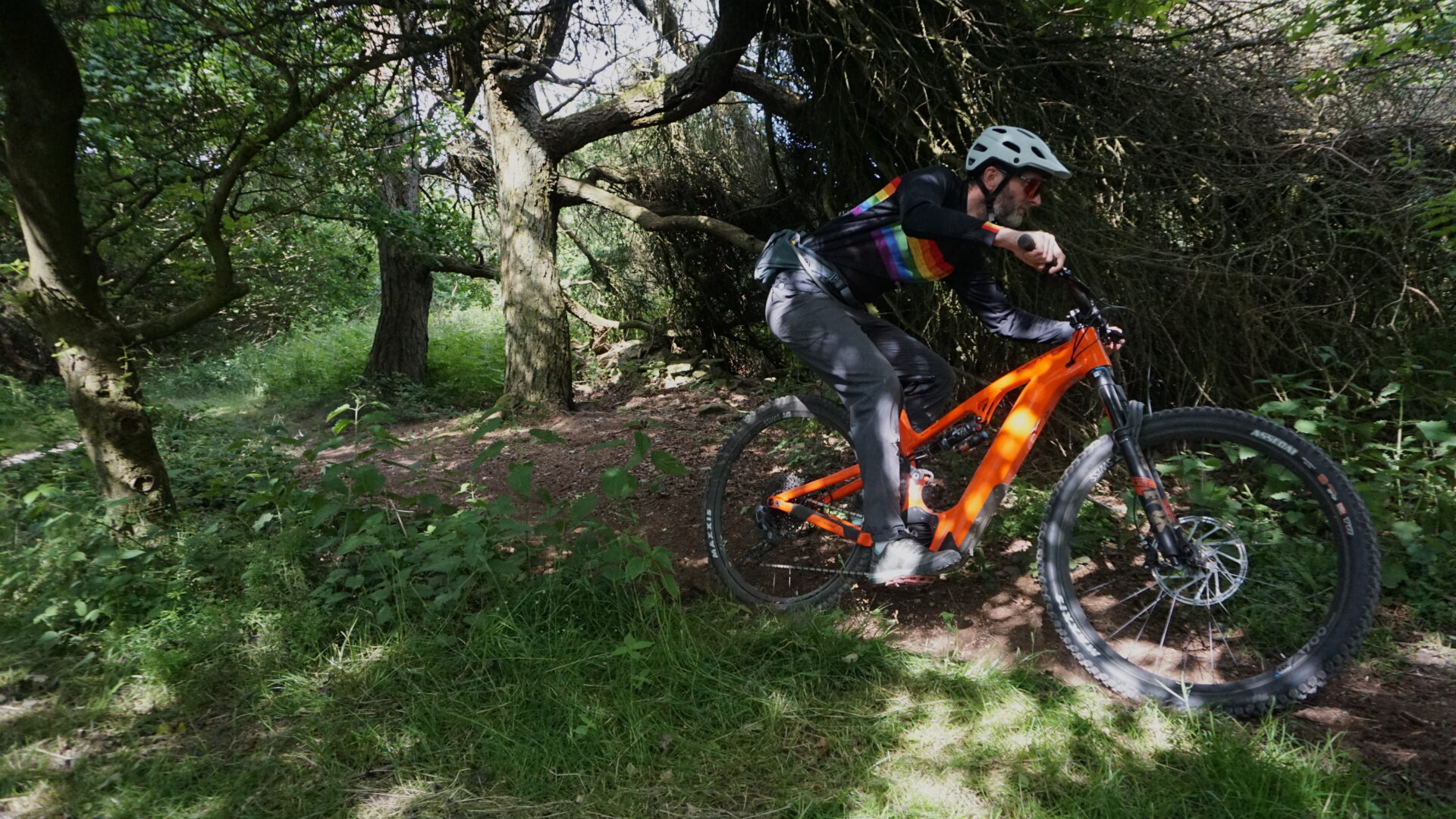
Members Only content continues…
If you have an account, please log in. If not, you can get access to some of our features by registering here for free.
You could join them and open up this and countless other articles and reviews from just £0.06/day!
All members get..
- Exclusive members only content
- Digital back issues
- New issues via iOS/Android App
- Ad free website
- Merch discounts
- Downloads, GPX files, PDFs, iBooks
Print+ members also get..
Next available print copy of Singletrack magazine posted to you. Each issue contains 148 pages of perfect ride inspiration, opinion, adventure and reviews.
A message from all of us at Singletrack magazine
We need your help
For over 20 years Singletrack has been a source of information, news and entertainment for millions of mountain bike enthusiasts and as an important focal point for an amazing community of like minded riders from around the world. But it has also been a provider of jobs and income for dozens of families of our team as well as a source of revenue for hundreds of freelance contributors.
We want to keep going through this uncertain period and create great content to inform and entertain you, but we will need your help to do it. More than anything else we want to have a reciprocal relationship with you and the best way to make that happen is through our memberships. We’d love you to join us as a paid member of the Singletrack community – we promise you a return on your investment through the content we have and will create for you.
Specification*
*differs from bike as-tested
- Frame // 6061 Alloy, 150mm
- Shock // Fox Float X Performance Elite DPS Evol LV, 230×57.5mm
- Fork // Fox Float 38 Performance Elite GRIP2, 160mm
- Wheels // Hope Fortus 30 rims, Hope Pro 4 hubs
- Front Tyre // Maxxis Assegai WT 29×2.5in 3C MaxxGrip EXO+
- Rear Tyre // Maxxis Minion DHR II 29×2.4in 3C MaxxTerra DoubleDown
- Chainset // SRAM EX1, 165mm, 36T
- Shifter // SRAM GX AXS Eagle
- Rear Mech // SRAM GX1 AXS Eagle
- Cassette // SRAM XG-1275, 10-50t, 12spd
- Brakes // SRAM Code RSC, 220/200mm rotors
- Stem // Whyte Enduro 35mm/35mm
- Bars // Whyte 6061 Alloy 35mm 800mm 30mm rise
- Grips // Whyte Lock-ON Enduro
- Seatpost // Crankbrothers Highline 3
- BB // SRAM DUB
- Size Tested // L
- Sizes Available // XS, S, M, L, XL
- Weight // N/A
Geometry of our size L test bike:
- Head angle // 64.5°
- Effective seat angle // 75.3°
- Seat tube length // 445mm
- Head tube length // 120mm
- Chainstay // 446mm
- Wheelbase // 1,269.2mm
- Effective top tube // 640.4mm
- BB height // 340mm
- Reach // 483mm
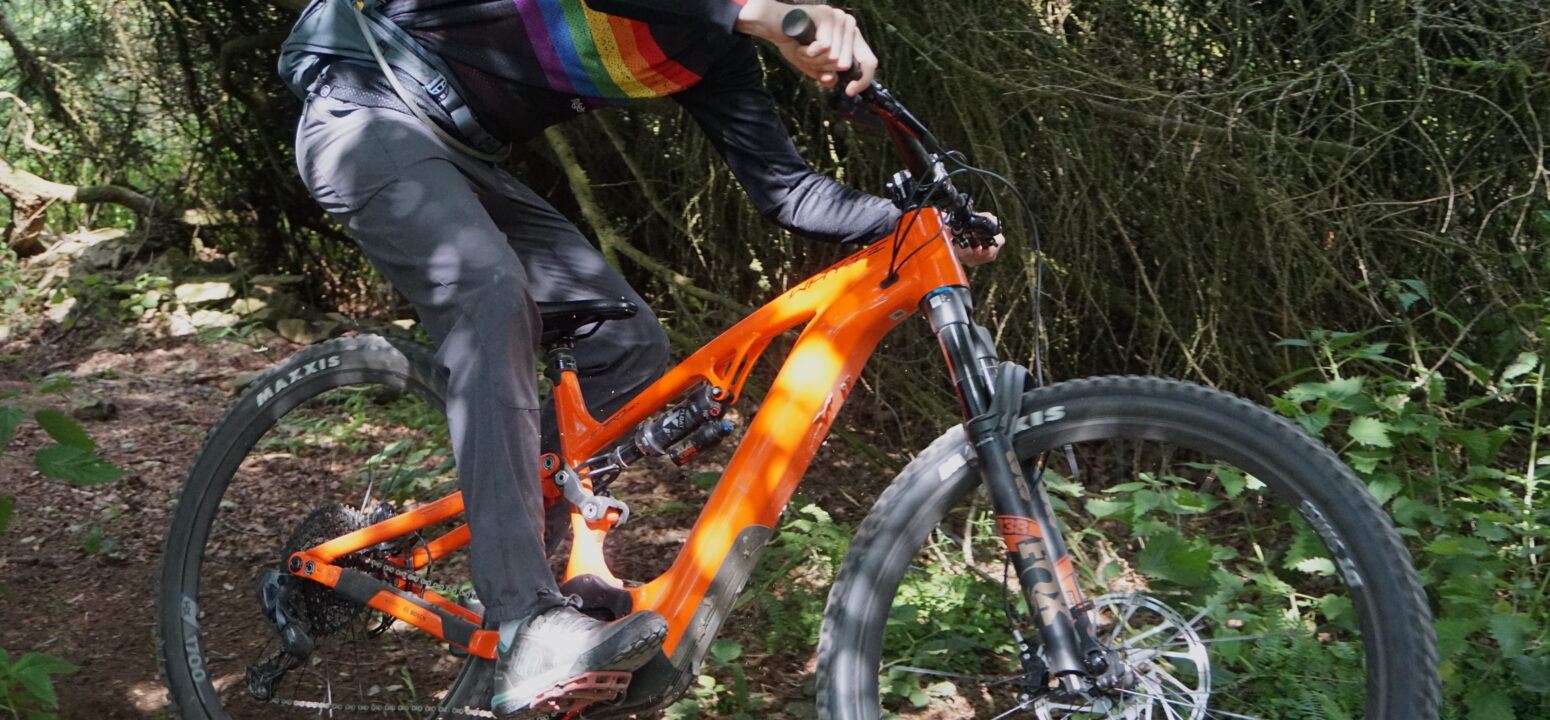


You must be logged in to reply to this topic.